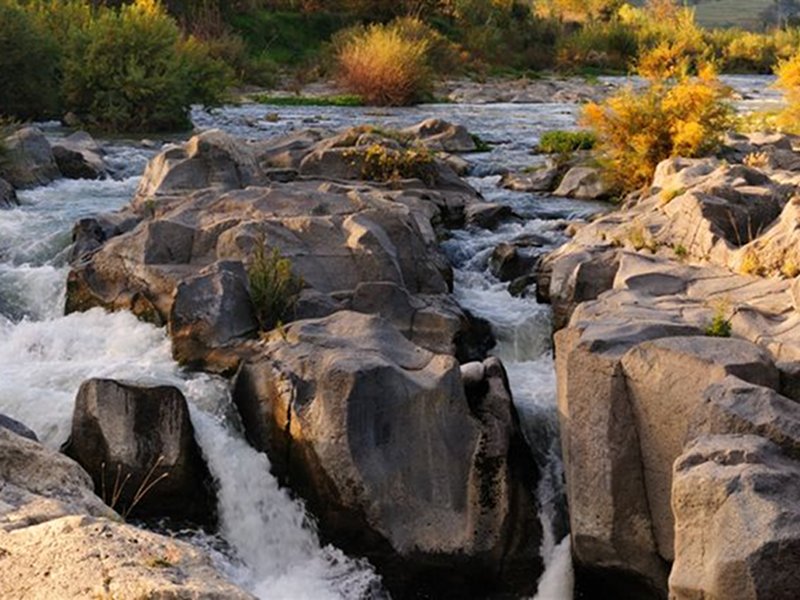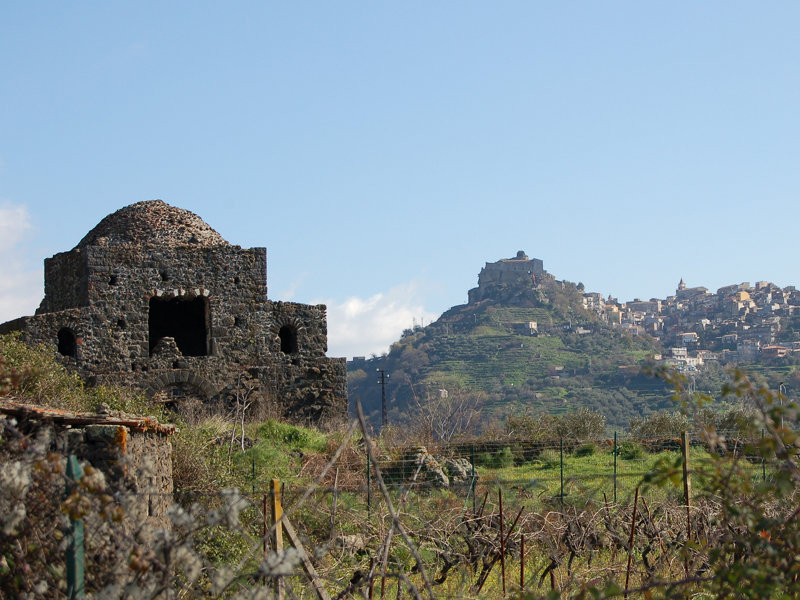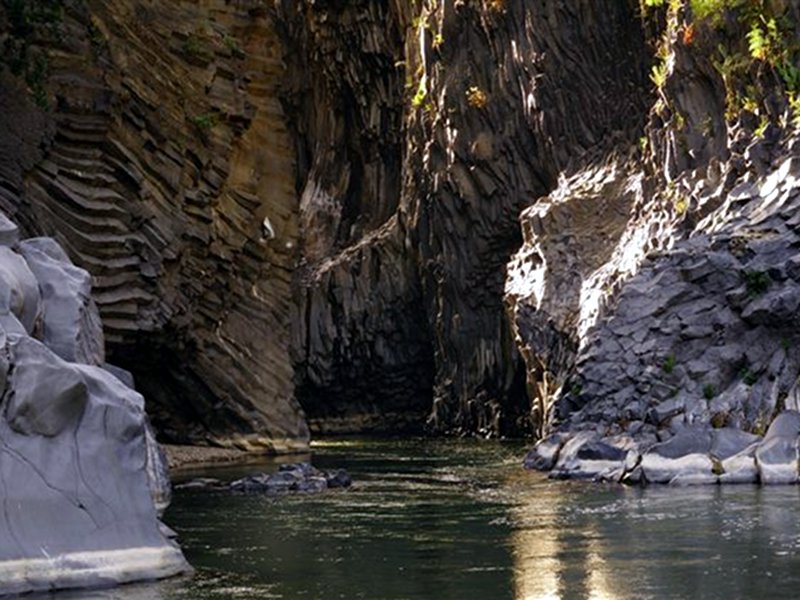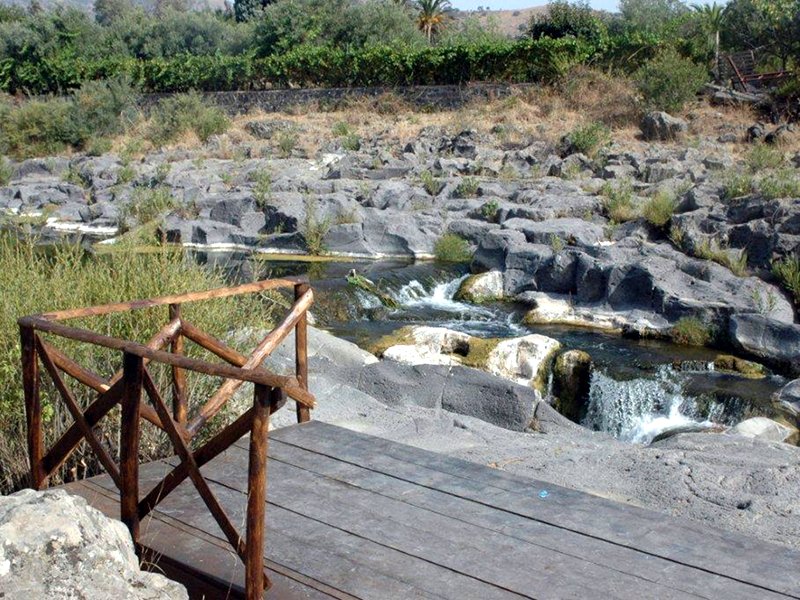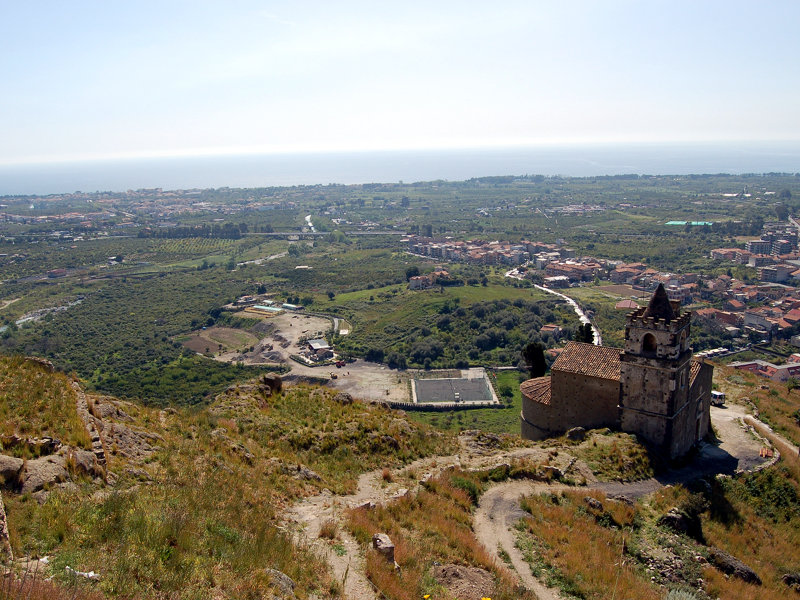- History
- The River
- Flora
- Fauna
- Geology
- Tour Guide Service
- Sport
- Environmental Education+
- Proposals
- Links and Useful Numbers
- Bodies
- Office Organization
- Statute
- Regulations
- Forms
- Notice Board
A waterfall of Nature
Home » The Territory
A journey along the river
From the river mouth to the source…
It is worth discovering and enjoying the many attractions offered by the towns within the Park.Going upstream, from the mouth up to the source, Giardini Naxos - the first Greek colony in Sicily - welcomes visitors, while from the Mount Tauro Taormina, a well-known tourist place, towers above the plain in Capo Schisò: these two towns offer visitors a rich historical, cultural and architectural heritage, whose archaeological evidences can be found in the local museums.
The next city along the valley is Calatabiano, whose name comes from the Arabic "Qalat-Bian", meaning "the castle of Biano". A noteworthy traditional event is the "Descent of St. Philip" which occurs in the third week of May, an ideal occasion to also visit the medieval castle and the S. Marco castle with their typical rectangular plans.
Gaggi was an ancient rural village and its name comes from the Arabic Karigi, meaning "canal". Its center develops near the river Alcantara's lower valley next to the Mount La Guardia.
A little farther tourists will find Graniti, a city of Arabic origin situated on the right bank of the stram Petrolo. It is famous for its pinewood and the rich production of cherries.
The itinerary continues towards Motta Camastra: along the state road leading to the different villages in the Park there are the Alcantara's Gullies, a place known worldwide thanks to its extraordinary basalt polygons. The interference between the incandescent lava flows and their slow cooling along the Alcantara made the river a very interesting destination, both from the tourist and the scientific point of view.
Among the valleys of the rivers Alcantara and Zavianni there is
Francavilla di Sicilia, namely the Park's headquarters. Not to be missed is a visit to the Monastery of the Capuchin Friars Minorhousing the Museum on the Franciscan Testimonies, as well as a herbarium consisting of medicinal plants typical of this territory's ecosystem. In 1719, near the monastery, a bloody fight broke out between Spanish and Austrian people which is well documented by printed materials and a detailed description of the facts.
Castiglione di Sicilia houses the Center for Research, Training and Environmental Education on river ecosystems. It is worth visiting the Lauria Castle, the Mother Church and the Santa Domenica Church (also called Cuba), a unique and remarkable example of a Byzantine dome-shaped building.
Mojo Alcantara lies in an alluvial plain near Mount Mojo, one of the smaller craters connected with Mount Etna. Mount Mojo's pyroclastic cone was at first considered responsible for the eruptive activity which would originate the lava lying in the Alcantara's river bed. However, recent studies have shown that these lava flows were originated by Mount Dolce.
Malvagna gives tourists the opportunity to admire the ruins of the Monastery of the Capuchin Friars Minor (dating back to the 17th century) and the small Byzantine church from the 6th-7th century also called "Cuba".
The ancient Auricella is today called Roccella Valdemone, it is situated at the end of Castelluzzo and its strategic position was known even during the Norman period. In the village it is possible to visit the Mother Church, The Church dedicated to the "Udienza", and the ruins of the feudal castle.
The journey through the valley ends in Randazzo, a small city which is also headquarters of three Parks (Alcantara, Etna and Nebrodi) and where also the visitor center rich in historical and architectural testimonies is situated.

© 2024 Ente Parco Fluviale dell'Alcantara
Via dei Mulini - 98034 Francavilla di Sicilia (ME) - Tel. +39 0942/388020 - Fax +39 0942/981038
E-mail: info@parcoalcantara.it - Certified mail: parcoalcantara@pec.it - C.F. 96005940836
E-mail: info@parcoalcantara.it - Certified mail: parcoalcantara@pec.it - C.F. 96005940836

